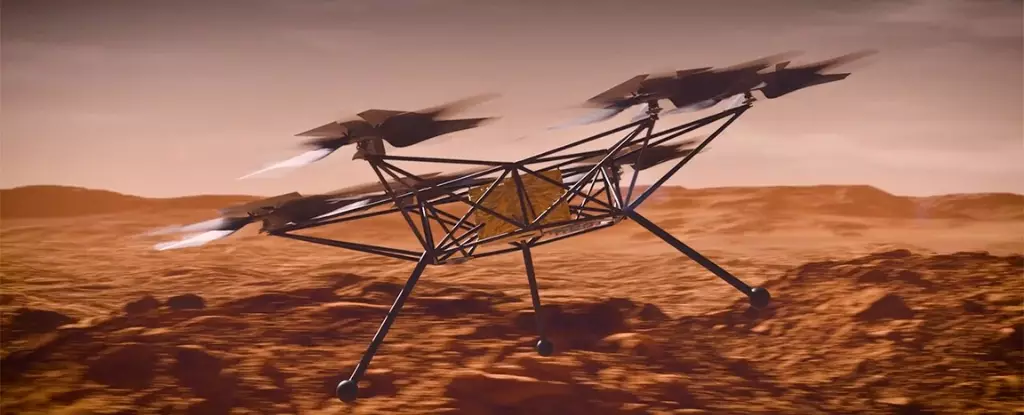In the realm of extraterrestrial exploration, NASA’s Ingenuity helicopter made history in April 2021 by accomplishing the first powered flight on another planet. Launched alongside the Perseverance rover in 2020, Ingenuity was not developed as a traditional helicopter but rather as a small drone specifically tailored for Mars’ unique atmosphere. With Martian air density being less than 1% of Earth’s, the task of achieving flight required significant innovation in engineering and design. Ingenuity’s inaugural flight, which peaked at an altitude of just ten feet, was more than a mere test; it marked the dawn of a new era in interplanetary reconnaissance.
With a series of 60 successful flights, Ingenuity has provided invaluable data, scouting regions for subsequent exploration and helping to pave the way for future technological advancements in aerial flight on Mars. However, the challenges it faced were not trivial. The thin atmosphere meant drone designers had to produce enough lift with smaller rotor blades, while also contending with Martian dust, which could easily hinder operational mechanisms.
With the lessons learned from Ingenuity, NASA is now looking forward to the next evolution in aerial exploration with the conceptual design of the Mars Chopper. This new aircraft is poised to outmatch its predecessor significantly by boasting a greater payload capacity and enhanced operational capabilities. The Mars Chopper is envisioned to carry scientific instruments such as imaging equipment and analysis tools that will allow it to perform more sophisticated tasks, driving our understanding of Mars’ geology and atmosphere.
The design, currently under development by the Jet Propulsion Laboratory in collaboration with the Ames Research Center, features an impressive structure roughly the size of an SUV. This increased size accommodates six rotors, each equipped with six aerodynamically advanced blades. These innovations allow the Mars Chopper to provide additional lift compared to Ingenuity, which had to battle against not only low air density but also the potential dangers posed by Martian dust storms.
One of the most exciting aspects of the Mars Chopper design is its projected capabilities. With a payload capacity of up to 5 kilograms and the ability to fly distances of up to 3 kilometers, this next-generation aircraft could immensely facilitate our exploration efforts on Mars. It will perform tasks that range from preliminary scouting missions to detailed terrain mapping and possibly even in-field analysis of collected samples. The implications of this are profound, as the Mars Chopper is expected to extend the reach of human exploration efforts on the Red Planet.
Additionally, as we explore what lies beyond Mars, the technologies and insights garnered from the development and operational use of Mars Chopper will form the cornerstone for similar future missions to other celestial bodies with atmospheres conducive to flight. The successful implementation of this technology is seen as not just a boon for Mars exploration, but also as a multi-faceted tool for surveying and scientific study across a broader array of alien landscapes.
The Future of Interplanetary Flight
The advent of the Mars Chopper signals a transformative leap in our scientific capabilities, enabling us to conduct aerial reconnaissance where rovers cannot venture. As the quest for knowledge drives us further into the cosmos, the lessons learned from both Ingenuity and the upcoming Mars Chopper will undoubtedly influence how we approach exploration of the entire solar system. Their ability to conduct detailed analyses and surveys could illuminate not just the mysteries of Mars but also those of moons and planets that beckon our curiosity.
NASA’s work on aerial vehicles like Ingenuity and the newly proposed Mars Chopper showcases a monumental stride for humanity’s exploration efforts. By combining innovative technology with bold exploration strategies, we are on the brink of dramatically enhancing our understanding of other worlds, setting the stage for what could be the most significant chapters in space exploration yet to be written.

Leave a Reply